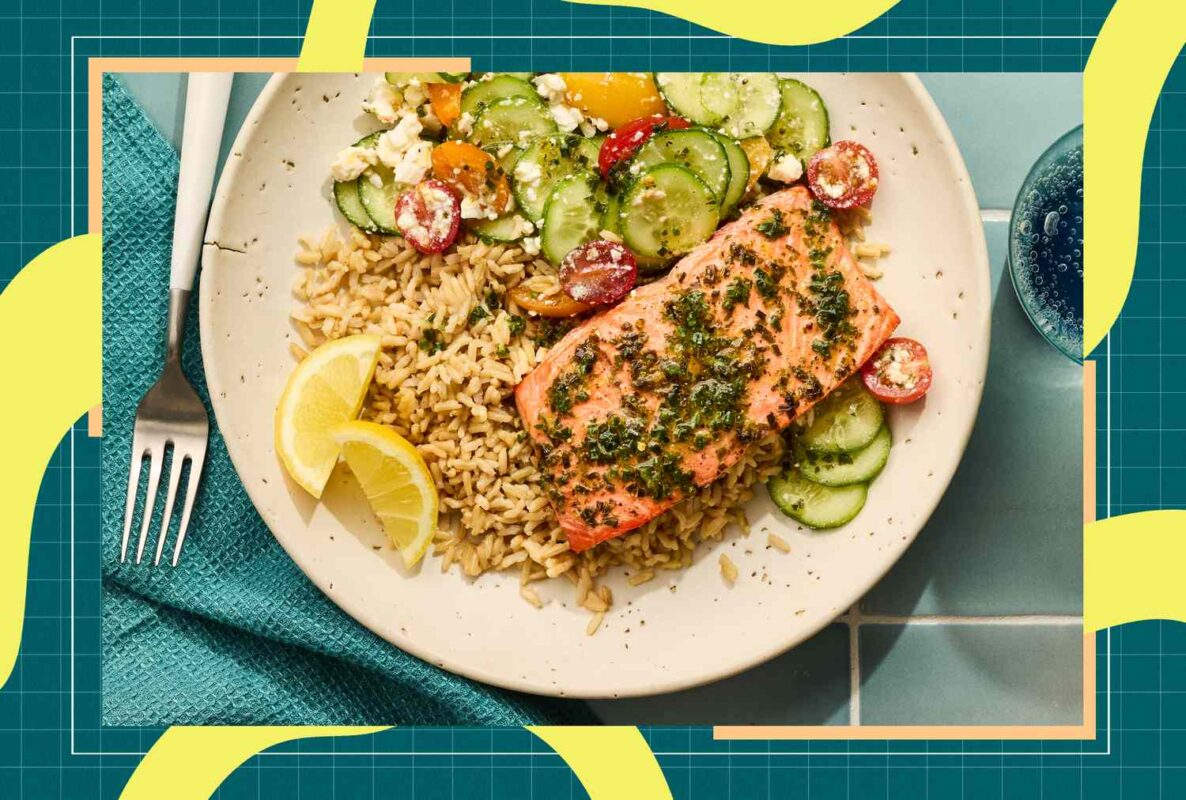Blog
6 Frozen Foods That Help Reduce Stroke Risk

- Frozen foods are nutritious, convenient and affordable.
- Look for frozen foods high in fiber, healthy fats and potassium to reduce stroke risk.
- Top frozen foods to buy include frozen vegetables, fruit, grains and fish.
When life gets busy, keeping your freezer stocked with easy, heart-healthy options isn’t just convenient—it can also help reduce your risk of stroke and support long-term health. According to the Centers for Disease Control, stroke is a leading cause of death in the U.S., and many of its key risk factors, like high blood pressure and inflammation, can be influenced by everyday food choices.
“Small, consistent choices add up when it comes to stroke prevention,” says Jessica Clancy-Strawn, M.A., RDN. This includes keeping frozen foods on hand that deliver heart-supporting fiber, potassium and healthy fats while also being low in sodium and saturated fat. Continue reading to learn the top frozen foods registered dietitians recommend to help reduce your risk of stroke—plus what to look for when you’re shopping.
1. Frozen Vegetables
“Frozen produce isn’t just convenient—it often retains peak nutrient content, helping you meet your goals while cutting down on waste and cost,” says Jamie Baham, M.S., RDN, LD. Research suggests that eating more vegetables—along with whole grains, legumes, seeds, nuts and dairy—significantly lowers blood pressure, diabetes and other risk factors of stroke.
Jennifer O’Donnell-Giles, M.S., RDN, recommends eating leafy greens, cruciferous vegetables and mixed stir-fry blends, as they’re rich in fiber, potassium, folate and antioxidants. These nutrients help manage blood pressure and reduce inflammation, two key factors that contribute to stroke risk. Great options include frozen broccoli, spinach, carrots, peas, cauliflower and mixed blends, which retain their nutrition, shape and flavor when you cook them.
2. Frozen Berries
Frozen berries receive praise from dietitians due to their high antioxidant content—in particular, anthocyanins—which help to fight cell-damaging free radicals in the body. “Anthocyanins and polyphenols help reduce inflammation and improve endothelial function,” says O’Donnell-Giles. These compounds support healthy blood vessels and help lower cholesterol, two factors closely related to stroke risk.
Frozen blueberries are an excellent heart-healthy pick. “Blueberries contain vitamin K, which may help reduce the risk of blood clots, stroke and heart attack,” adds Clancy-Strawn. Other great options include frozen blackberries, raspberries and strawberries. Frozen berries are easy to add to smoothies, oatmeal or yogurt, and they last longer than fresh ones.
3. Frozen Fish
The next time you’re at the grocery store, don’t pass up the heart-healthy fish in the freezer aisle. “Frozen salmon, mackerel or sardines are excellent sources of omega-3 fatty acids, which have anti-inflammatory and blood pressure–lowering benefits,” says O’Donnell-Giles. Omega-3s also help protect blood vessels from plaque buildup and support brain function.
The American Heart Association recommends eating two servings of fatty fish per week to help reduce stroke risk. Keeping frozen fish on hand makes it easier to get more of these essential nutrients—especially when fresh options are unavailable.
4. Frozen Whole Grains
Whole grains like brown rice and quinoa are rich in fiber, potassium and other nutrients that support heart health. Fiber helps regulate blood sugar and cholesterol, while potassium helps counteract sodium’s effect on blood pressure. Research shows that consuming more fiber is associated with a lower risk of stroke, and for individuals who have already experienced one, eating a high-fiber diet may help reduce the risk of future health complications and support overall longevity.
Many frozen whole-grain products are now precooked for easy meal preparation. To build a balanced meal that lowers your stroke risk, “start with a base of frozen whole grains, add a generous serving of frozen vegetables and include a lean protein,” suggests O’Donnell-Giles.
5. Frozen Avocado Chunks
While less commonly thought of as a freezer staple, “frozen avocado chunks are a convenient source of heart-healthy monounsaturated fats,” says O’Donnell-Giles. Adding avocados to your diet may help to lower cholesterol levels, promote heart health and prevent stroke. Try adding frozen avocado to smoothies for a creamy texture or use it to make guacamole.
6. Frozen Meals
While not all frozen meals are created equal—many are high in sodium—dietitians agree that they can still fit into a healthy eating pattern, especially when paired with fruits and vegetables. According to Baham, eating too many salty foods can raise your blood pressure because sodium causes blood vessels to tighten. In contrast, potassium helps blood vessels relax. “That’s why balancing higher-sodium foods with potassium-rich options, like fruits and vegetables, can help lower blood pressure and reduce stroke risk,” she explains.
Clancy-Strawn suggests pairing frozen skillet meals or ravioli with added vegetables to round out the meal. “Balance on the plate is key,” she emphasizes.
Shopping Tips
When grocery shopping, keep these tips in mind to pick the best foods that help reduce your risk of stroke:
- Look for Lower-Sodium Options. “Many people don’t realize that up to 70% of their sodium intake comes from processed and frozen foods, not from the saltshaker,” says Clancy-Strawn. Aim for less than 500 milligrams of sodium per serving in frozen foods.
- Check the Saturated Fat. “Shoppers aiming to reduce stroke risk should look for saturated fat content of less than 2 grams per serving,” recommends O’Donnell-Giles. Limiting saturated fat intake helps prevent plaque buildup in arteries, which can lead to a heart attack or stroke.
- Prioritize Fiber-Rich Foods. Frozen fruits, vegetables and whole grains are excellent options to increase fiber intake. O’Donnell-Giles suggests choosing frozen foods with at least 3 grams of fiber per serving when possible.
- Pick Potassium-Packed Foods. “When you balance foods that are higher in sodium with foods that are higher in potassium, this helps reduce high blood pressure and the risk of stroke,” explains Baham. Aim for foods where potassium is equal to or higher than the sodium content.
Our Expert Take
When it comes to stroke prevention, small, consistent habits can have a lasting impact—and stocking your freezer with the right foods is an easy place to start. Not only are frozen ingredients convenient, they often retain peak nutrient content, helping you meet your goals, save money and cut down on food waste. Look for options that are low in sodium and saturated fat, but high in fiber and potassium.












